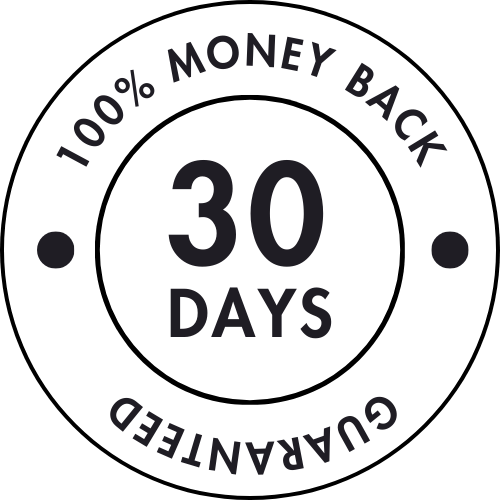TL;DR
Zinc supports hair by aiding follicle cycling, keratin synthesis, and scalp immunity. Adults need 8–11 mg/day (women/men), easily met through food; the Upper Limit (UL) is 40 mg/day. Chronic doses ≥50 mg/day, especially from supplements, can block copper, causing hair loss, anemia, and nerve issues. Stick to food-first and use supplements only for lab-confirmed deficiencies under medical guidance. Pair with Ginsela Botanical Hair Growth Serum for optimal scalp support. Office of Dietary Supplements
Story: Sanam’s Zinc Spiral
Sanam’s shedding spiked after exams. She ordered a “hair mineral mega-dose” with 50+ mg zinc daily. Initially hopeful, she later faced worse shedding and foot tingling. Her dermatologist found low copper (caused by excess zinc), stopped the pills, and shifted her to zinc-rich foods with absorption tweaks. Within 3–4 months, using food-first zinc, copper repletion, and Ginsela Hair Oil for Scalp Health & Growth, Sanam’s brush showed less hair, and baby hairs appeared. Lesson: Zinc helps hair when dosed right—food-first, pills only if prescribed. Office of Dietary Supplements, PMC
1. Zinc & Hair 101: What It Actually Does
- Follicle cycling: Zinc aids DNA/RNA synthesis and cell division, driving hair shaft growth. Deficiency is linked to telogen effluvium and alopecia areata. PMC
- Keratin & repair: Supports enzymes for keratin structure and oxidative damage repair in follicles. PMC
- Scalp environment: Maintains immune balance; zinc-based actives (e.g., zinc pyrithione) reduce dandruff inflammation. JCAD
- Bottom line: Zinc is essential, but excess can harm. Aim for adequate, not overboard. Office of Dietary Supplements
2. Safe Intakes: How Much Zinc Do You Need?
- RDA (adults 19+): 11 mg/day (men), 8 mg/day (women); pregnancy 11 mg, lactation 12 mg. Office of Dietary Supplements
- UL (adults): 40 mg/day from all sources to prevent copper deficiency. Office of Dietary Supplements
- Risks of excess: ≥50 mg/day long-term can cause copper deficiency, anemia, neuropathy, and hair loss. Office of Dietary Supplements
- Safety rule: If nearing or exceeding 40 mg/day with supplements, consult a clinician. Office of Dietary Supplements
Pro Tip: Enhance your zinc plan with Ginsela Moisturizing & Strengthening Hair Oil to support dry ends and scalp health.
3. Food vs. Pills: What’s Safer for Hair?
| Criteria | Food Zinc | Supplemental Zinc |
|---|---|---|
| Absorption | Naturally balanced with co-nutrients | Form-dependent; can compete with minerals |
| Overuse Risk | Low (hard to exceed UL) | Higher; easy to overshoot UL |
| Copper Balance | Preserved | High-dose zinc → low copper risk |
| Best Use | Daily baseline | Deficiency only (clinician-guided) |
UL 40 mg/day; chronic >50 mg/day raises copper deficiency risk. Office of Dietary Supplements
4. “Too Much” Zinc: What It Looks Like
- Symptoms: Nausea, cramps, headaches, reduced HDL cholesterol.
- Serious risks: Weeks of ≥50 mg/day can block copper, causing anemia, neutropenia, myeloneuropathy (numbness, gait issues), and hair loss. Office of Dietary Supplements, PMC, amjmedsci.org
- Drug interactions: Zinc reduces absorption of tetracycline/quinolone antibiotics and penicillamine; separate doses. Thiazide diuretics increase zinc excretion. Office of Dietary Supplements
5. “Too Little” Zinc: What It Looks Like
- Symptoms: Diffuse shedding, brittle hair, poor wound healing, taste changes, frequent infections.
- Evidence: 2023–2024 studies link low zinc to alopecia areata and telogen effluvium; correcting deficiency may help. PMC
6. The Food-First Zinc Plan
A) Best Food Sources (Per Typical Serving)
| Food | Zinc (mg) | Notes |
|---|---|---|
| Oysters (3 oz) | 28–32 | Highest food source |
| Beef (3 oz, roasted) | ~3.8 | Highly bioavailable |
| Blue crab (3 oz) | ~3.2 | Lean seafood source |
| Fortified cereal (1 serving) | ~2.8 | Check label |
| Oats cooked (1 cup) | ~2.3 | Add vitamin C fruit |
| Pumpkin seeds (1 oz) | ~2.2 | Easy topper/snack |
| Cheddar (1.5 oz) | ~1.5 | Adds protein & zinc |
| Greek yogurt (6 oz) | ~1.0 | Breakfast base |
FDA DV for zinc = 11 mg; phytates in plant foods reduce absorption. Office of Dietary Supplements
B) Absorption Hacks
- Phytates in grains/legumes bind zinc; soak, sprout, or ferment to reduce phytate. Pair with protein and vitamin C (citrus, peppers). Office of Dietary Supplements, PMC, SNI Global
- Vary plant and animal sources for mixed diets to boost total zinc. Office of Dietary Supplements
C) 7 Zinc-Smart Meal Ideas
- Sardine-lemon toast with parsley, capers (zinc, vitamin D, omega-3).
- Beef & broccoli stir-fry (heme zinc, vitamin C veg).
- Greek yogurt bowl with chia, kiwi, pumpkin seeds (zinc, vitamin C).
- Lentil–pepita tacos with cabbage-lime slaw (plant zinc, vitamin C).
- Oyster mushroom & egg scramble (protein, potential vitamin D if UV-exposed mushrooms).
- Chickpea–spinach coconut curry with lemon (zinc, iron, vitamin C).
- Fortified cereal with milk, berries, peanut butter (zinc, vitamin C).
7. When (and How) to Supplement Zinc
- Only if: Clinician confirms deficiency via history, exam, or labs (serum zinc has limitations). Office of Dietary Supplements
- If prescribed: Doses are individualized; clinicians aim to keep total zinc <40 mg/day long-term, monitoring copper if needed. Office of Dietary Supplements
- Timing: Separate zinc from high-dose iron, tetracyclines, or quinolones by several hours. Office of Dietary Supplements
8. Complement with Gentle Scalp Care (Optional)
Nutrition works internally; topicals support the scalp externally. Try:
- Morning (3–4x/week): Apply a few drops of Ginsela Botanical Hair Growth Serum to clean scalp; style as usual.
- Evening (2–3x/week): Massage Ginsela Hair Oil for Scalp Health & Growth for 2–3 minutes; wash or leave per label.
- Other options: Ginsela Moisturizing & Strengthening Hair Oil for dry ends; Ginsela Peptide Hair Growth Serum for peptide-based support.
- Note: Patch-test; consult a clinician for severe hair loss.
9. How-To: Balance Zinc Safely (Checklist)
- Aim for RDA: 8–11 mg/day from food. Office of Dietary Supplements
- Rotate sources: seafood, meat, dairy, legumes, seeds, fortified grains. Office of Dietary Supplements
- Improve absorption: Soak/sprout/ferment high-phytate foods; add vitamin C. Office of Dietary Supplements, PMC
- Track total: Count zinc from multivitamins/lozenges. Office of Dietary Supplements
- Stay under UL: Keep total <40 mg/day unless supervised. Office of Dietary Supplements
- Watch red flags: Nausea, metallic taste, numbness—seek care. PMC
- Consider scalp support: Pair with serum/oil like Ginsela Peptide Hair Growth Serum.
10. FAQs
- Is zinc deficiency a common cause of hair loss? It can contribute; studies link low zinc to alopecia areata and telogen effluvium, but not all hair loss is zinc-related. Test first. PMC
- What daily amount is safe long-term? Stay below 40 mg/day (UL); target 8–11 mg/day (RDA). Office of Dietary Supplements
- Can too much zinc cause hair loss? Yes—chronic ≥50 mg/day can deplete copper, leading to hair loss, anemia, neuropathy. Office of Dietary Supplements, PMC
- What foods help hit RDA? Oysters, beef, crab, pumpkin seeds, oats, dairy, fortified cereals. Office of Dietary Supplements
- Tips for plant-based eaters? Use fortified foods, legumes, oats, seeds; soak/sprout to reduce phytate, add vitamin C. PMC
- Are zinc shampoos good for hair growth? They target dandruff (zinc pyrithione); may improve scalp but aren’t growth treatments. JCAD
- Multivitamin has 15 mg zinc—okay? Usually fine if diet isn’t zinc-heavy; stay under 40 mg/day total, avoid extra zinc without advice. Office of Dietary Supplements
- How quickly will hair respond? 3–6 months when correcting deficiency with broader care.
11. Why You Should Buy: Balanced Routine
| Reason | What You Gain | Suggested Pick |
|---|---|---|
| Daily lightweight support | Non-greasy scalp care | Botanical Hair Growth Serum |
| Massage evenings | Comfort + circulation | Hair Oil for Scalp Health & Growth |
| Dry, brittle ends | Shine; reduce snap | Moisturizing & Strengthening Hair Oil |
| Peptide approach | Modern leave-in active | Peptide Hair Growth Serum |
12. Key Points Recap
- Zinc supports follicle cycling and keratin; aim for 8–11 mg/day from food (UL 40 mg/day). Office of Dietary Supplements
- Chronic ≥50 mg/day from pills can deplete copper, worsening hair loss. Office of Dietary Supplements, PMC
- Use oysters, beef, crab, seeds, oats, dairy; reduce phytate, add vitamin C. Office of Dietary Supplements, PMC
- Supplement only for confirmed deficiency; separate from certain drugs. Office of Dietary Supplements
- Pair with scalp care like Ginsela Peptide Hair Growth Serum; expect results in 3–6 months.











